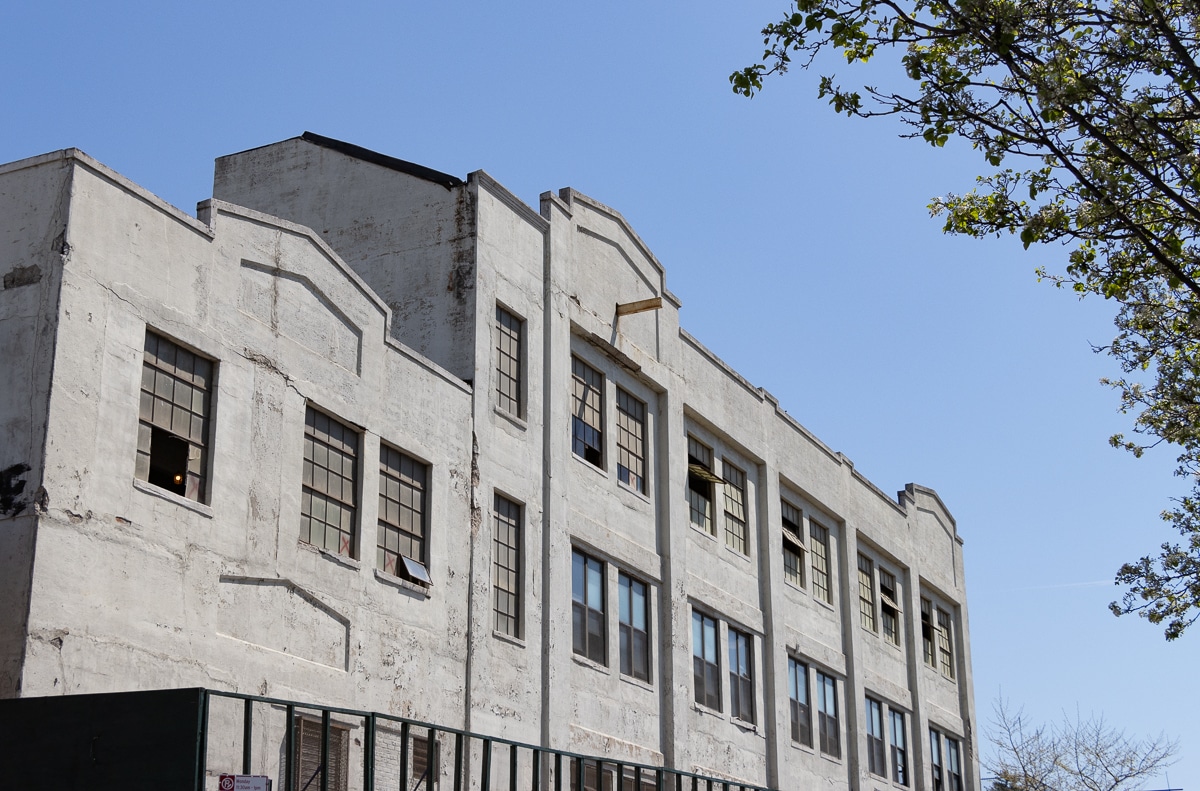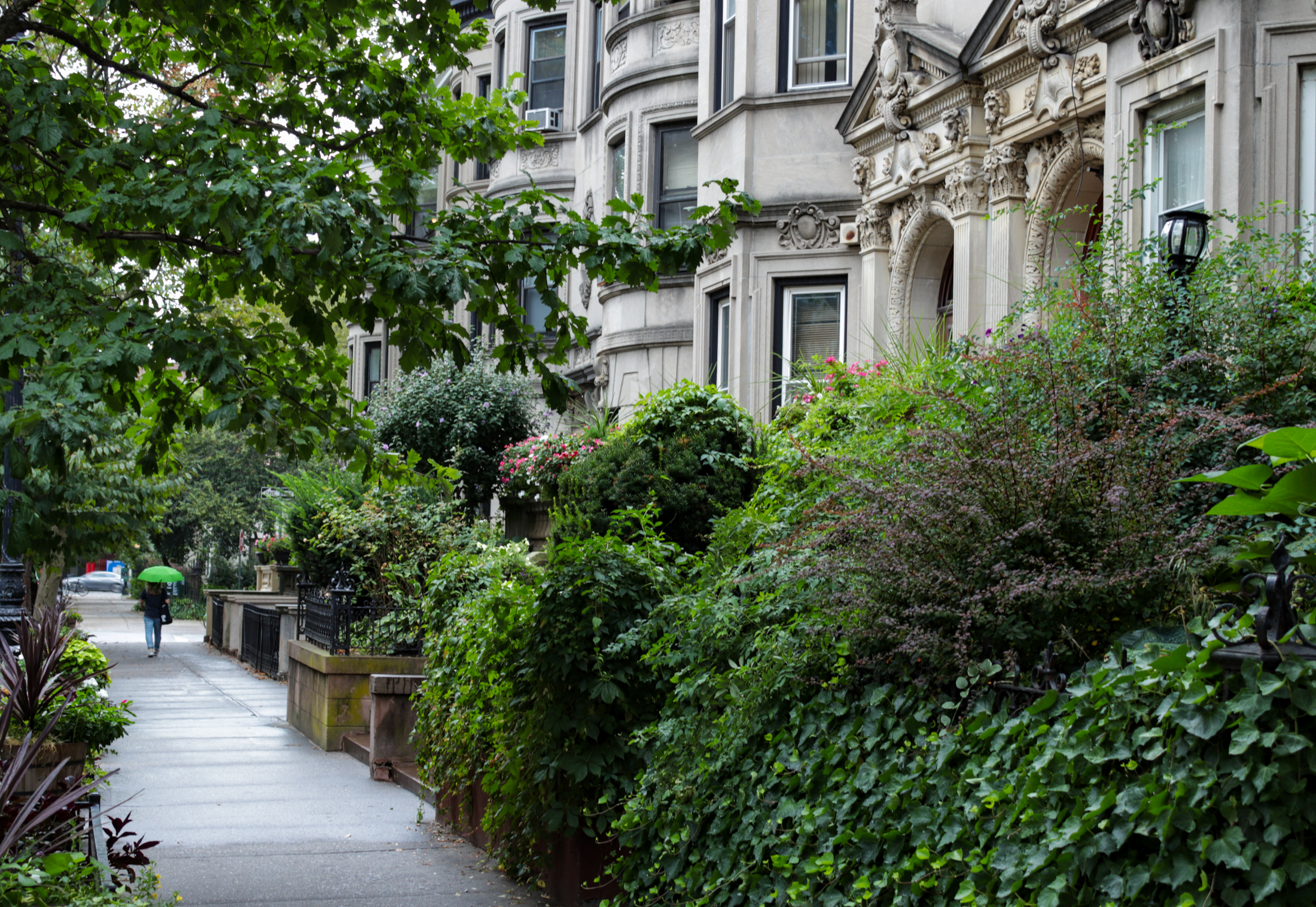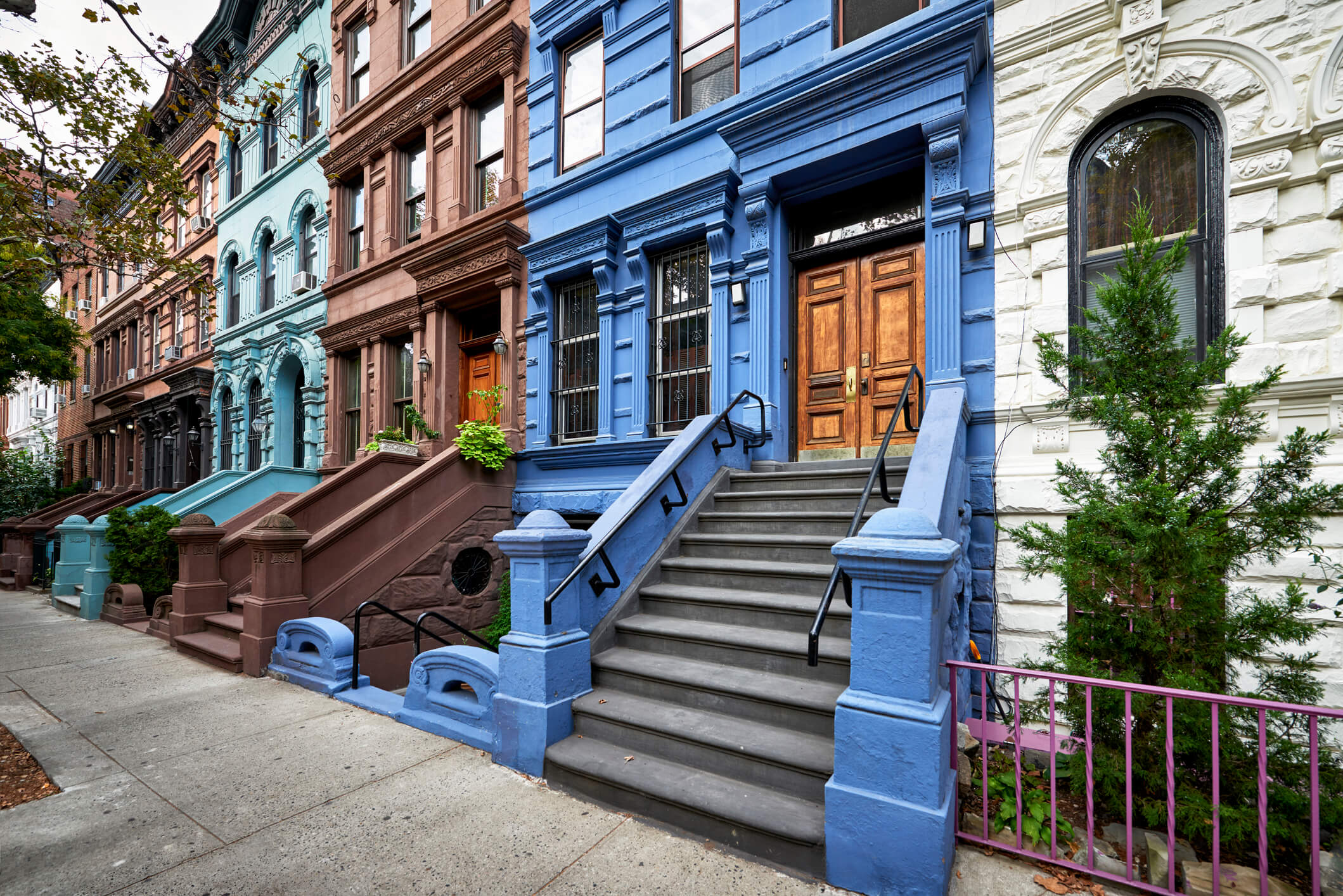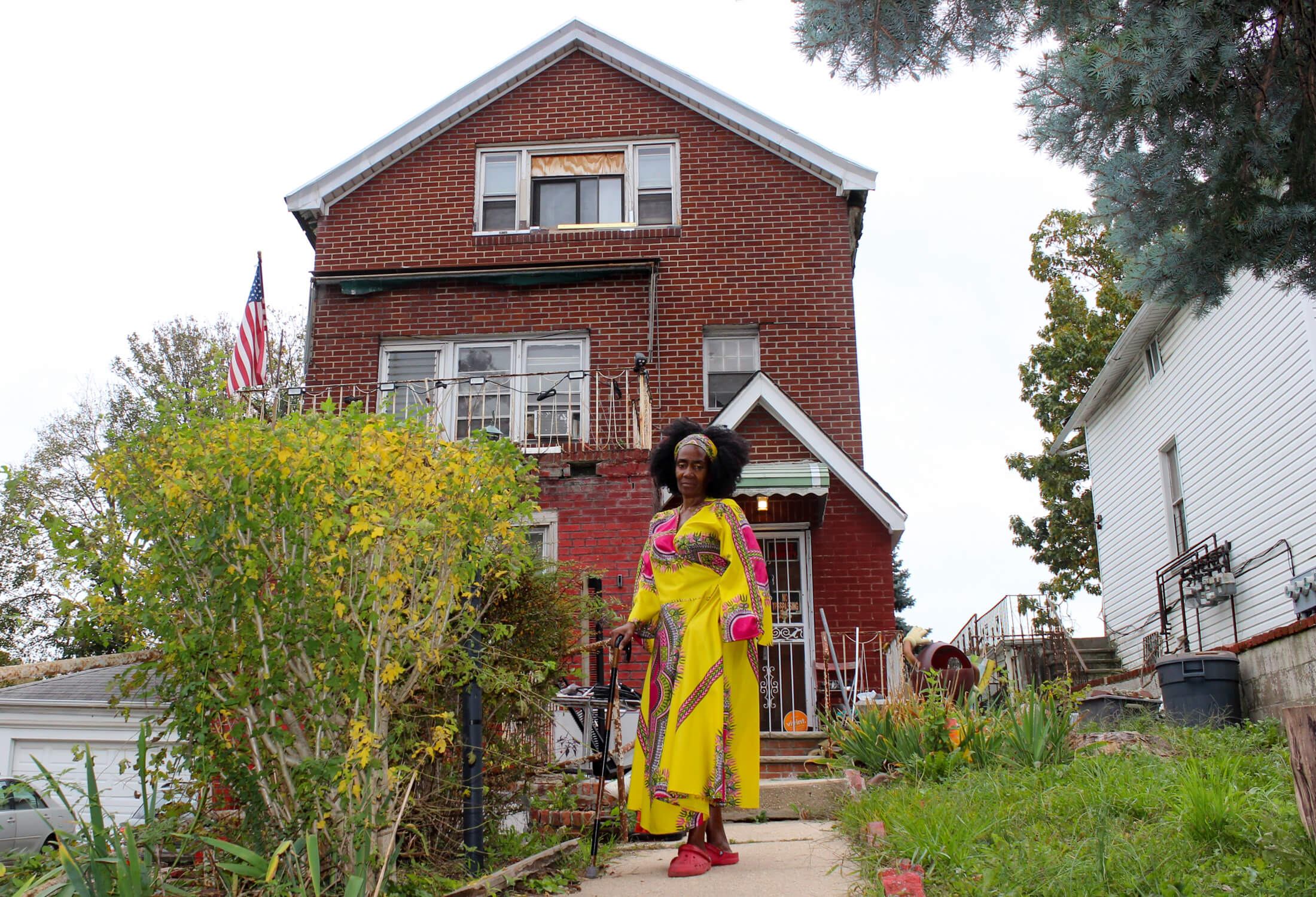Walkabout: The “Landlord of East New York,” Part 3
The life and career of Edward F. Linton seemed to be heaven blessed. In the years following the Civil War, he came to Brooklyn by way of Massachusetts and Manhattan, and every endeavor he attempted seemed to be successful. He started his business career as a fireworks company president, and the money amassed from that…

The life and career of Edward F. Linton seemed to be heaven blessed. In the years following the Civil War, he came to Brooklyn by way of Massachusetts and Manhattan, and every endeavor he attempted seemed to be successful. He started his business career as a fireworks company president, and the money amassed from that business enabled him to buy land in the growing community formerly called New Lots, now the 26th Ward of Brooklyn: East New York. Through some canny and fortuitous purchases of old Dutch farmsteads, he rapidly became one of the largest landowners, developers and landlords in East New York. As his power and influence grew, so did his presence in local politics and community planning. Edward Linton had great plans for East New York, and in order to do what he wanted to do, he needed the ears and attention of city and state government. So he did what many wealthy men do, even today, he jumped into politics.
The Republicans ruled Brooklyn in the last quarter of the 19th century, so Linton ran as a Republican candidate for state office. Unfortunately, even though he was a powerful landowner and ENY fixture, he didn’t impress his fellow political animals. He was not liked by the powerful Republican committee heads of the 26th Ward, which was probably as much due to Linton’s own A-type personality and generally pushy manner, as it was to jealousy over his accomplishments and money. He was so disliked that at one point he was asked to leave their company. It took him two years to do so. In the meantime, he lost his bid for the state legislature.
His fellow Republicans may have been able to deny Linton a seat in Albany, but they couldn’t deny his influence with Brooklyn’s city government. Linton had the ears of the mayors of Brooklyn, whoever they might have been over the years. He was the head of the Atlantic Avenue Improvement Commission, a consortium of local business and civic leaders concerned with the business and social development of Atlantic Avenue, as it ran through the 26th Ward. And he was busy; there was a lot going on in the area in the late 1880s, as commerce, public transportation, amenities and people were pushing out towards the Queens border.
There were three pressing issues concerning the community of East New York. The first was sewer service to all of the new homes going up in the area, the second was the Long Island Railroad tracks which ran along Atlantic Avenue through East New York, and the third was the development of the elevated trains that would also be running through the community. All three were necessary to the growth of the area, and all three were causing problems.
On November 30, 1889, Mayor Alfred C. Chapin came to call in East New York. A Democrat, he was mayor of Brooklyn between 1888 and 1891. Linton and Chapin had similar goals, including the expansion of the city of Brooklyn. Edward Linton invited the Mayor out to East New York to show him his new Ward; the 26th had only been part of the City of Brooklyn since 1886. Linton wanted to show Chapin the beauty and potential of the area, and he also wanted him to see what they were lacking, specifically good roads, sewers and transportation. It would be an eye-opening trip.
Linton may have been many things, but he truly loved the 26th Ward, and he knew what was needed for the area. He had invited Chapin out on an unofficial visit; two old friends taking in the community, touring the sights. First he had the mayor and his entourage enter the Ward on the awful roads that had literally cut East New York off from the rest of Brooklyn. Point One. Then he took them up to the ridge where Highland Boulevard now runs, and the mayor was able to look out across the valley out to Jamaica Bay. He could see the growing community of East New York stretching below him, the neat rows of cottages, many of them built and owned by Linton, covering the newly laid out streets, and all the rest – churches, businesses and homes easily visible through the branches of the now bare trees. It was rather breathtaking, the evolution of a neighborhood. Point Two.
They could also see construction, lots of it, as even more houses and buildings were in the process of going up, and they could look over and see the new Ridgewood reservoir being dug, and the empty fields nearby that would be perfect for a city park that could be enjoyed by all of the people eagerly moving into the new construction. The fact that Linton owned those fields was probably not mentioned at that time. Tact and timing is everything, after all. Point Three.
Linton was an excellent tour guide, pointing out the progress made since the city had annexed East New York. He took the mayor around to see where factories and jobs were already operating. And then there were those roads. They travelled up to Bushwick Avenue, near Evergreens Cemetery, where the paved roads stopped, and the dirt roads began. They did the same on Pennsylvania Avenue, one of ENY’s main streets, and Linton hinted that this could be a pleasant and amiable street for residents to travel, if it were only paved. Other important streets were discussed as well, including Eastern Parkway, which was supposed to end here with some kind of fanfare, as it began at Grand Army Plaza. Instead, it just fizzled out. Think of the possibilities, your Honor. Point Four.
Linton took Chapin down New Lots Road past the engine house of the Long Island Water Supply Company, which was currently supplying water to the area, and they stopped in front of Eastern Park, which Linton’s new baseball team had just bought (from Linton). That story was told in our last chapter. The fabulous grandstand had not yet been built, but Linton stopped the tour, and the two men stood there, gazing out over the field while Linton asked the Harvard educated mayor about the great games he had played whilst in college.
How great would it be, he asked, to have college games here, like a recent game played somewhere else, where Yale, Harvard’s eternal rival, had received its comeuppance from Princeton. That could happen RIGHT HERE, and people would come from miles around to see it. If only the streets were paved. If only more trolleys were routed out here, and if only the sewers and other infrastructure so needed by East New York were to actually be built. Brooklyn would have a monopoly on this kind of stadium, and patrons of sports could take the train from anywhere below 125th Street in Manhattan, and get there in an hour, thanks to the Long Island Railroad. Final point and game!
The mayoral trip to East New York ended with a luncheon at Edward Linton’s home, and the mayor went back to City Hall with much to think about. Edward Linton was a master salesman, and he and his Atlantic Avenue Improvement Committee hoped that money would soon begin flowing to East New York, enabling this grand dream to come true. A month later, the Mayor appointed a commission that would look into one of East New York’s pet projects, an elevated railroad along Atlantic Avenue that would take the Long Island Railroad up off the avenue, where it currently ran, all the way from Flatbush, on out to Queens. Linton and other local businessmen eagerly signed a petition supporting this move.
A new Rapid Transit Commission was appointed, and Edward Linton was one of the members. Each commissioner represented a different area affected by the railroad, so depending on where they were, different commissioners wanted different things. Edward Linton was not the only powerful landowner represented. They floated a number of ideas around, including sinking the entire railroad below the surface, in a trench, a plan they called a “depressed roadway”. But that would cut one side of Atlantic Avenue off from the other, so that idea was not ideal, although some members of the commission liked it. This was going to take years. Meanwhile, Linton pressed on with all of his other projects. He was in the papers just about every day, pushing for projects to be completed in ENY. Not everyone was impressed.
The Brooklyn Eagle opined that “Of course, Mr. Linton would, if he could wield the power, make the 26th Ward blossom like a rose. That is what he is there for. Unfortunately for his ambitious projects, there are other interests to be considered. The elaborate scheme of municipal expenditure on which the city is embarked is costly enough to demand exercise of the utmost prudence. While the improvements now underway impose grave responsibilities in the present and the accumulation of larger burdens for future generations, they should not unnecessarily open the door for the benefit of thrifty promoters of real estate speculation. Nor should too much generosity be exercised in any given locality.
The 26th Ward ought not to be neglected, but there is no reason to give it precedence over the 18th, the 25th, or any other subdivision of the municipality. If the function of municipal administration were to “boom” Mr. Linton’s schemes and pave the way for his personal enrichment his demands would command a degree of favorable consideration which, in existing circumstances, will hardly be granted. In what he has already done, he has not fared badly. He ought to feel satisfied with the good fortune which has already attended his enterprises.”
Sounds like fightin’ words to me. Edward Linton was not done yet.
(Early 20th century postcard of LIRR in East New York. East New York Project.)
The Landlord of East New York – Part One
The Landlord of East New York – Part Two









What's Your Take? Leave a Comment